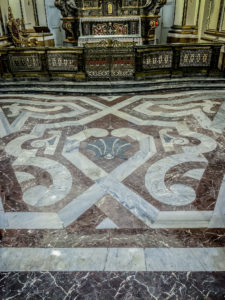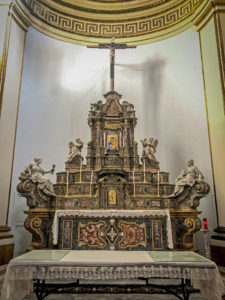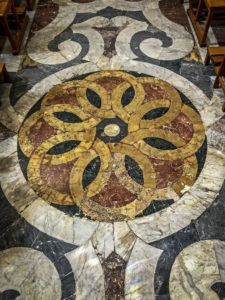As you enter the church you are enveloped by an evocative golden light inside an elongated octagonal space, bordered by four chapels and four altars alternating along the axes of the church.
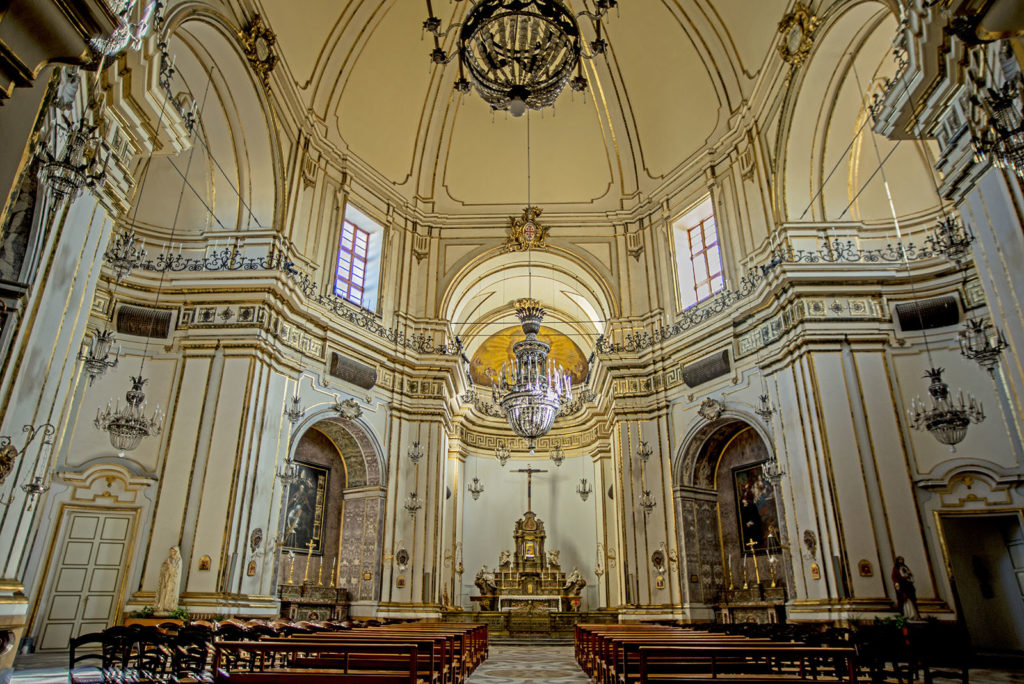
At the height of the
trabeation
on the first level, the characteristic swollen gratings at the bottom allowed the nuns to participate in liturgical celebrations without being seen.
Under the
vestibule
is the
crypt
, where the nuns are buried. The giant order of limestone
pilasters
covered with plaster is embellished with details in pure gold and stucco.
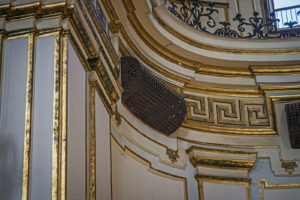 The eye, drawn upwards, is attracted to the majestic dome decorated with frescoes, dating back to 1842, by the Catanese painter
Giuseppe Rapisardi
The eye, drawn upwards, is attracted to the majestic dome decorated with frescoes, dating back to 1842, by the Catanese painter
Giuseppe Rapisardi
.
The scene shows St. Beryl, the third patron saint of the city, receiving the task of founding the Church of Catania from St. Peter.
The ethereal and classic room is very different from the exuberant interiors of Sicilian Baroque.
The whiteness of the walls is interrupted by the precious polychrome marble of the floor and altars, in particular the
high altar
which stands out sumptuously in the
apse
.
The particular design of the 18th-century floor, created by
Giovanni Battista Marino
, consists of eight alternating segments decorated with arabesque motifs. The design converges into a central flower, tracing the
Greek cross
plan of the church, then extends to the chapels.
